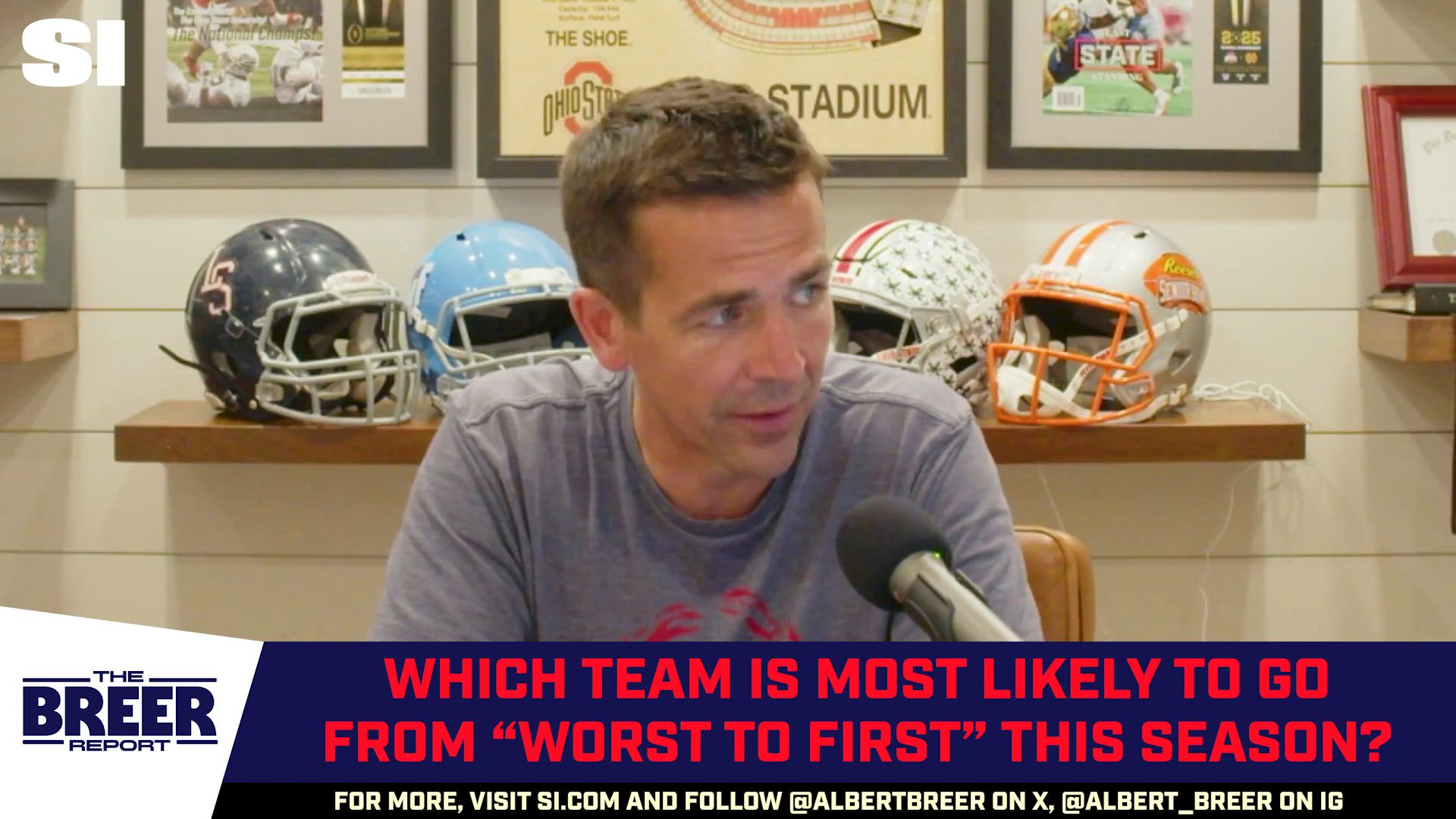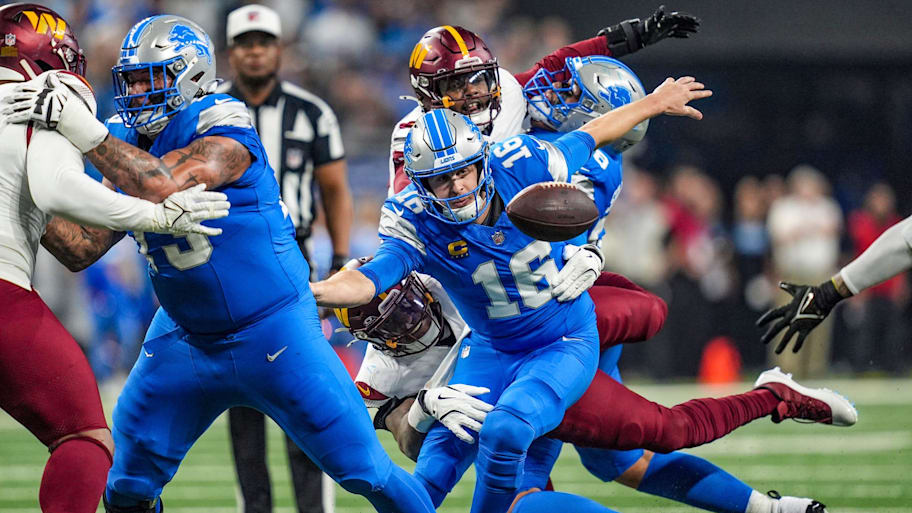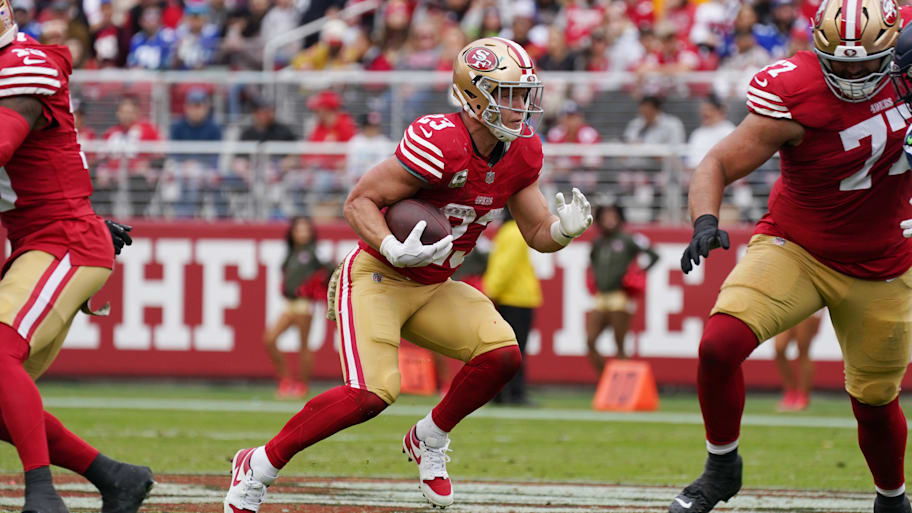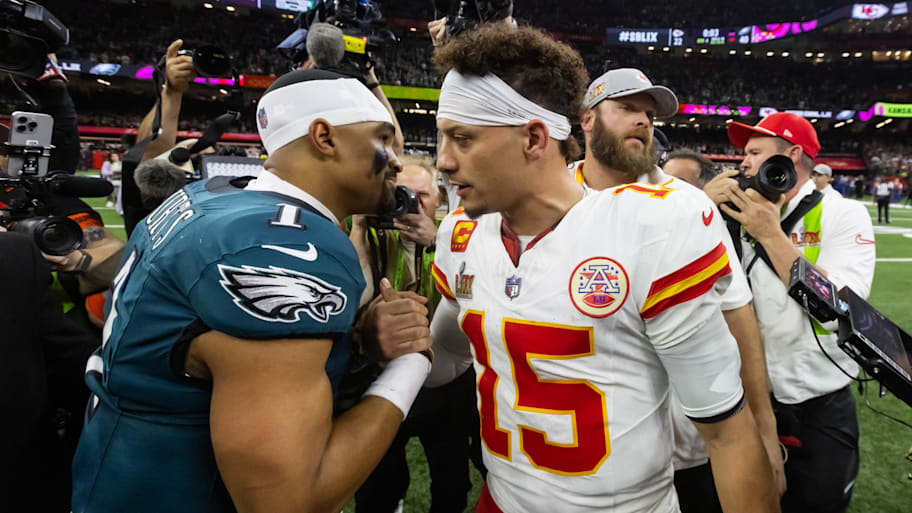
Every summer, I write a post listing the 12 teams that can actually win the Super Bowl … and then I typically proceed to chicken out by adding one or two more teams at the bottom of the list in a classic case of C.Y.A. By the end of the list, I end up with nearly half the NFL, which makes it less a list of teams that can actually win the Super Bowl and more a list of, say, eight good teams and another six that have a good enough roster that, after a few adult gummies, you could talk yourself into it.
However, this is 2025, a year in which I’m trying to limit the more deleterious people-pleasing aspects of my personality. With that in mind, I am cutting off the list at 12, with no exceptions. For those who find this list offensive, I don’t care. (I secretly really, really do, but I’m trying not to.)
An important note before we get rolling: This list is in alphabetical order by city name. It is not a ranking.
Baltimore Ravens
I expect either the Ravens or Commanders to finish the season ranked No. 1 in total offense. From what I have heard this offseason about Lamar Jackson and his continued ascent into a leadership role within the Ravens’ offense and organization, my optimism has ballooned in terms of what’s possible. I think there’s still another pivot Baltimore’s offense can make and another level it can reach. We sometimes discuss Jackson in abstract terms, as if he’s making it up as he goes along. The truth? Like a great painter or physicist, he sees his chosen vocation in a way no one else does. He’s getting better at relaying those thoughts and, with it, his capabilities within the traditional confines of an NFL offense. Add in the fact that the depth on this roster is incredible, especially on the defensive back end where attrition can often sink teams, and you have a tried and true recipe for a Super Bowl champion.
Buffalo Bills
You’re going to hear me talk about depth a lot over the next few paragraphs. As I’ve said all offseason, I am less impressed that Buffalo added Joey Bosa than I am that the team has real competition with upside at almost every defensive line position, including a rotation of up to 12 players. That’s how the Eagles demolished teams last year, evidenced by the fact that Milton Williams, a supplementary player in that defense, got a $100 million contract from the Patriots this offseason. The growth of players such as Khalil Shakir—whom I’ve been high on for years now—emboldened GM Brandon Beane to attack the defense with fervor in the draft. The Bills didn’t make an offensive draft pick until the sixth round and it was on the offensive line. Anyone who watched the Bills a year ago would agree that the offense wasn’t the problem. It was a defense that was suspect against the pass and solid against the run—but with room for upside.
Combine all that with Buffalo’s entrenched QB-coach combination, and that the quarterback is a certified MVP, and you have an obvious inclusion onto this list.
Cincinnati Bengals
While the Bengals are swimming upstream with defensive issues and the lack of a running game, I have no doubt that Joe Burrow, Tee Higgins and Ja’Marr Chase are capable of putting up 35 points per game. At this point, any help from Trey Hendrickson and Shemar Stewart, if they can resolve their contract disputes and get on the field, would be an added bonus.
In all seriousness, while I don’t think former defensive coordinator Lou Anarumo was the problem at all, I do think Al Golden brings some value to the fold defensively. The college game is still rapidly feeding the beast in terms of offensive ideology at the NFL level, and Golden did a great job of elevating a Notre Dame team that legitimately contended in the national championship game against a far more talented Ohio State team. He can also do this with a solid, but objectively undermanned defensive lineup. He doesn’t have to be great—he just has to give up 34 points a game.
Denver Broncos
What a difference a year makes. Second-year quarterback with upside? Super Bowl–winning head coach? Elite defense that added a ton of juice? Check, check, check. Bo Nix finished third in Offensive Rookie of the Year voting after being the sixth quarterback picked in the draft. Sean Payton snapped an eight-year Broncos playoff drought in his second season. And the team added tough, physical defenders in Dre Greenlaw and Talanoa Hufanga.
My inclusion of the Broncos is more of a box-checking maneuver at this point, because it’s hard not to include them when you add up all the components of the roster. We’ll see whether defensive coordinator Vance Joseph stays a step ahead and Payton finds a way to get more out of a running game that was Jets-level inefficient last season.

Detroit Lions
Surprisingly, the Lions are the only team on my list from last year’s torture room division, the NFC North. Divisions rise and fall, but outside of notable departures on the coordinator front, the Lions appear to be better situated than they were toward the end of last season. Plus, as is true with all Dan Campbell teams, the hallmark will be the growth of the team as a whole. Adding heft up front by selecting defensive tackle Tyleik Williams in the first round and diversifying their weapon set with wide receiver Isaac TeSlaa in the third will help the Lions remain one step ahead of their opponents, who are trying to capture the essence of Detroit’s maddening offense and beefy, physical defense.
The Lions’ schedule is difficult, but in my estimation they are the one team in the NFC North complete enough to weather it without mass difficulty. The Packers have some fairly pronounced defensive weaknesses. The Vikings are, in essence, starting a rookie quarterback. The Lions have the personnel to survive even the worst-case scenario.
Los Angeles Chargers
On the day of the Chargers’ wild-card loss to the Texans, I stepped in it with a full-throated defense of Justin Herbert. I would like to address one of the accurate criticisms I received from a few knowledgeable NFL folks, before moving into the meat of my decision to include Los Angeles. At times last season, I put too much blame on the wide receivers (specifically Quentin Johnston) and not enough on Herbert’s tendency to throw some truly erratic passes. I think I got caught up in intellectualizing the throw instead of accepting that he sometimes makes strange decisions buoyed by his incredible arm talent.
All that said, L.A.’s offseason was another step in the direction of removing those impulses and weaponizing Herbert only when necessary. This team won 11 games last year, sure, against an underwhelming schedule, but has only made moves toward bolstering the most critical components of the team this offseason. The line is unquestionably better. The backfield is unquestionably better. The wide receiver room? You guessed it. While you can argue that these improvements were done at the expense of the defense, I see a unit that was borderline exceptional with a host of younger players who are growing into their roles. That unknown upside could contribute to a team good enough to win the AFC West.
Los Angles Rams
This team was about four plays away from the Super Bowl in a cross-country road game against the eventual champions. So, of course, we cannot discount them as a possible Super Bowl contender when considering how much better the Rams got this offseason. Davante Adams joins Puka Nacua in an offense that will play well off a defense that should evolve from spunky to elite in year two of DC Chris Shula’s system. I imagine the Rams will have a little bit more functionality. Whereas Cooper Kupp was getting open thanks to a lot of ancillary legwork, Adams will probably just be open, or provide a different and more immediate target option for Matthew Stafford.
Also buoying this decision is what I’ve heard about the vibe in L.A. right now. Listening to people who have left the premises for other opportunities is like talking to someone who has just emerged from a retreat. Sean McVay is in his era right now, and when there’s a coach helming the project that has so much potential schematically but also so much to give interpersonally, the ceiling is high.
Kansas City Chiefs
Your confidence in the Chiefs returning to—and winning—the Super Bowl depends on your confidence in Josh Simmons developing fast enough in training camp to hold down the anchor tackle position, leaving the right side to a combination of Jaylon Moore and Jawaan Taylor. Look, the Chiefs are never not going to be on this list, and I think we’ve learned enough about the power of a quarterback-coach mind meld like Andy Reid and Patrick Mahomes to know that even the most underwhelming iteration of a roster around them can still be capable of winning the Super Bowl. While I personally predicted a little bit of a Patriots-style gap between Super Bowls for Kansas City as it builds up an offensive line and turns over its defense, there is a case to be made that Rashee Rice was cresting elite territory before his injury last year, which would make a tremendous difference in the Chiefs’ outlook should his progress continue.
With a thinner Travis Kelce and Kansas City’s changes up front, I do wonder about the team’s ability to continue developing a more balanced run-pass attack, or if the burden will be on Reid to supplement his offense with backfield creativity even more than he has in years past. None of this seems impossible, which means we have to at least consider the Chiefs a Super Bowl front-runner.
Philadelphia Eagles
My personal Super Bowl prediction—Bills vs. Eagles—is predicated heavily on the belief that, while the Eagles lost some brain power this offseason in OC Kellen Moore and had key losses on the defensive line, the advantages that the Eagles displayed a year ago are still pronounced enough to carry over to the 2025 season. Meaning: I think the Eagles are still too big and too strong, even as other teams hop into the arms race to try to match them.
If the Eagles are able to sustain their success from an ego standpoint, meaning A.J. Brown is still willing to block and accept a diminished target share, and the offense as a whole is still eager to be—in essence—conducted by Jalen Hurts before the snap in order to put the group into better run fits, then I don’t see how the Eagles aren’t still the best team in the NFC and, thus, have the best chance to return to the Super Bowl.

San Francisco 49ers
Perhaps the most controversial selection on this list, the 49ers are coming off a six-win season in 2024 due, in part, to a roster dismantled by injury. From the outside, San Francisco looks to have subtracted more than it added, although I feel that massively overlooks a few critical components of this team’s offseason.
One is the return of Robert Saleh as defensive coordinator. Saleh is the perfect emotional counterpoint to Kyle Shanahan and now has one of his favorite commodities at his disposal—a stable of young, fast, malleable and aggressive players to work with. The 49ers spammed their defense in the draft with additions at pass rusher, defensive tackle, linebacker and nickel corner.
Part of this projection is one of belief. I believe that the 49ers did not make a move at running back because they expect Christian McCaffrey will return to form. I also believe that second-year receiver Ricky Pearsall will take a step forward. I also can hope, like the 49ers will hope, that Trent Williams has a complete season left in the tank. If at least two of these three scenarios pan out, San Francisco is not much different from the dangerous team that nearly clipped the Chiefs in the Super Bowl two years ago.
Tampa Bay Buccaneers
Yes, the Buccaneers. Part of the reason this team has had so much success with offensive coordinators—both Liam Coen and Dave Canales were hired for head coaching jobs after just one season on post—is because of the vision laid out by Todd Bowles. He is crystal clear as to what kind of offense best helps the type of defense he has become known for. The result is a multiple offense with a lot of underrated playmakers tucked underneath the marquee names such as Mike Evans and Chris Godwin. This team may be one of the more talented from front to back in the NFL if we were to assign each player a kind of Madden-like grade and take the average.
Defensively, additions to the secondary in the draft should help to bolster what Bowles found some success with over the latter half of the 2024 season, when Tampa was arguably one of the top three defenses in the NFL. More support on the back end will allow for more exotic rush looks while also maximizing coverage support.
Washington Commanders
I have changed my tune on the Commanders this offseason, which I hope is all right with you (I’m sure it’s not for the handful of media homers who are pretending they’re now covering the infallible Patriots of the early 2000s, but I digress). While I was not initially thrilled with the idea of adding Deebo Samuel and Laremy Tunsil to the build process, my skepticism has taken a backseat to my confidence in an offensive coaching staff that is garnering heavy buzz around the league right now. If what we saw from Jayden Daniels during his rookie season was merely the tip of the iceberg, I think the Commanders have the potential to be a Ravens-like outlier in how they produce yards. With that in mind, even if the defense takes a marginal step forward (which you would imagine it would, given the crop of young second- and third-round picks in the mix for jobs this year, in addition to some key veterans) we could see a run highlighted by more consistency during the regular season.
This article was originally published on www.si.com as The 12 Teams That Can Win Super Bowl LX.
